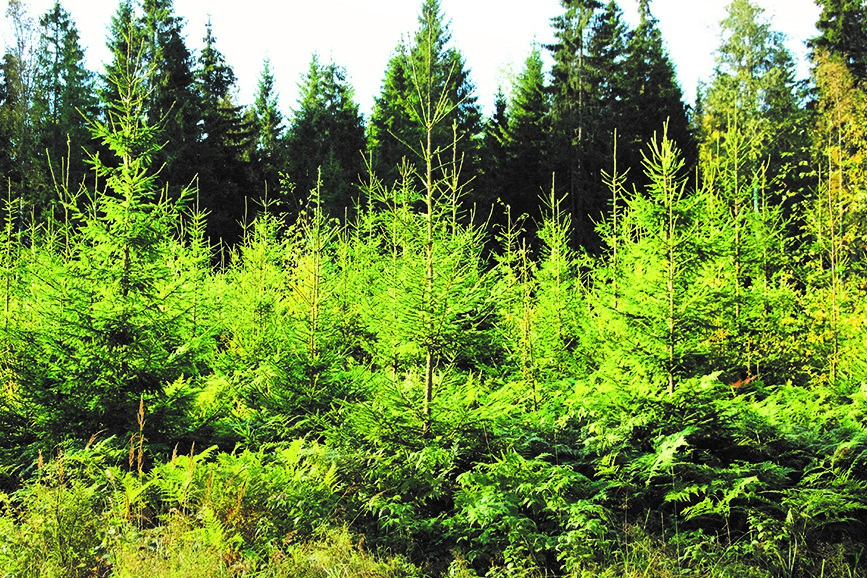 Top 5 ways scientists are trying to reverse climate change
Top 5 ways scientists are trying to reverse climate change
Increasing amounts of atmospheric CO2 are threatening humanity’s existence on Earth, but scientists have a few tricks up their sleeves. From worldwide tree-planting to sucking CO2 from the air, meet some of the most innovative and effective ways to reverse climate change.
Humans have harnessed Earth’s resources to create the climate crisis, so we can do the same to resolve it. That’s the view of the Global Climate Restoration Forum, who met for the first time in New York last month and believe that humanity needs to sequester one trillion tonnes of CO2 by 2050 if it wants to extend its comfortable tenancy on Earth. The Forum discussed a strategy to achieve this target and ‘restore’ the climate to pre-industrial levels, which included these five existing and emerging carbon removal methods.
Direct Air Capture
Direct Air Capture (DAC) is akin to a planetary extractor fan, sucking in CO2 directly from the air using chemical reactions, such as hydroxide solutions, and giant machines. Some companies, such as Carbon Engineering and Global Thermostat, repurpose this excess CO2 into jet fuel and fizzy drinks, while Swiss-based Climeworks employs a more novel approach: pumping CO2 into large greenhouses to boost plant growth.
DAC is both scalable and permanent, as CO2 is sequestered for over 100 years, but also highly energy intensive. It is an expensive solution at between USD 100-600 per tonne of CO2, although this number is expected to fall as new competition and technologies enter the market.
Building with CO2-created limestone
Transforming CO2 from aeroplanes into an airport terminal. It seems fanciful, but companies in the UK, US and Australia have developed methods to turn excess CO2 into concrete and other building materials. Silicon Valley-based Blue Planet, for example, combines CO2 with calcium to create synthetic limestone, which was recently used to build a new terminal at San Francisco airport.
Brett Constantz, Blue Planet’s CEO, says it’s a technology that “can pay for itself”, given construction companies are quarrying, mining and buying these raw materials anyway. Meanwhile, the Foundation for Climate Restoration estimates that “substituting synthetic limestone for quarried aggregate could pull 50 gigatonnes of CO2 per year from the atmosphere” by 2030.
‘Reflective sand’ in the Arctic
The Arctic has long been our planet’s space blanket, reflecting the sun’s summer light away from Earth. However, with sea ice disappearing at a rate of 13% per decade (according to NASA), this protective heat shield is weakening.
As a remedy, a project called Ice911 has been proposed sprinkling tiny balls of silica, or ‘reflective sand’, over 19,000 square foot of sea ice, to bolster its reflective power. Successful tests have been carried out in Alaska and to replicate them on the desired scale is estimated to cost USD 1–5 billion per year.
Ocean Iron Fertilisation (OIF)
The Ocean Iron Fertilisation (OIF) theory goes as follows: iron is strategically placed in ‘pastures’ in the ocean, leading to blooms in phytoplankton and microscopic plants. These organisms pull in CO2 from the atmosphere and sequester it in the deep ocean when they die.
13 OIF experiments have been carried out so far, with contentious results. Its proponents point to a cost-effective method for removing atmospheric CO2 - OIF costs about USD 1 per tonne of CO2 - but its detractors say the amount of carbon taken to the deep is either undetectable or negligible as the carbon is released again via the food chain.
Planting one trillion trees
However, the cheapest way to remove excess CO2 is tree-planting. According to a new study, we can remove two-thirds of human emissions by planting one trillion trees in the world’s 1.7 billion hectares of treeless, cropless, building-less land.
Lead researcher professor Tom Crowther of Swiss university ETH Zürich told the Guardian that planting one trillion trees is “overwhelmingly more powerful than all of the other climate change solutions proposed” and that “for 30 US cents a tree...we could restore the 1 trillion trees for USD 300 billion”.
Trees take time to grow; time we clearly don’t have. Humanity therefore needs to embrace a range of scientific techniques alongside a worldwide planting effort in order to reverse climate change.
Climate Restoration’s chief executive, Rick Parnell, stated that “Mother Earth will survive without us, but we’d like for humans to survive too”. Adopting the aforementioned approach would give us a fighting chance.
Text: Beetle Holloway
